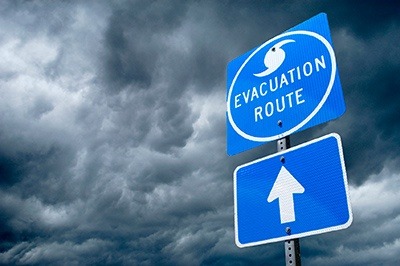What’s new?
- On March 21, the U.S. Securities and Exchange Commission (SEC) proposed regulations that would require publicly traded companies to disclose detailed information on climate-related risks and opportunities, including short- and long-term financial impacts. SEC is requiring companies to assess and disclose material physical risks to infrastructure and operations as well as risks associated with the transition to a low-carbon future, if considered material. These disclosures would be required in annual reports or registration statements and as line items in consolidated financial statements.
- While many companies already report on climate-related risks and impacts in their environmental, social, governance (ESG) and sustainability reports, SEC’s proposed rules would subject climate-related disclosures to a higher level of legal scrutiny, in quarterly 10-Q and annual 10-K filings.
- SEC’s rulemaking is aimed at enhancing and standardizing climate-related disclosures by making amendments to two rules under the U.S. Securities Act of 1933: regulations S-K and S-X.1
- The proposed disclosure requirements are modeled after the Task Force for Climate-Related Financial Disclosures (TCFD) framework for reporting climate risks and opportunities, and the Greenhouse Gas Protocol, the most widely used GHG accounting standard.
Why is SEC proposing these changes?
- Investors have been seeking more detailed information on climate-related risks and potential impacts to companies’ infrastructure, operations, and business strategy, and have stressed the need for greater consistency and comparability across companies.
- The SEC previously published guidance on how companies should address climate risks in their filings, but there are varying degrees of completeness and reliability of public disclosures.
- The SEC estimates that one-third of all registered companies have published climate-related information and large numbers of companies have set emissions reduction targets.
What is SEC proposing?
- Physical risks. Companies would be required to disclose the impact of physical climate-related events on their business including damage due to severe weather/storms, wildfires, drought, flood, extreme temperatures, and other natural events.
- The proposed rules require a level of granularity in assessing material physical risks to a company’s infrastructure or operations, including disclosure of locations (zip code) of assets at risk so investors can understand if climate-related physical risks are concentrated in geographical regions.
- For example, if a company determines that flooding presents a material risk, the proposed rules require assessment and disclosure of the percentage of buildings, plants, or properties that are located in flood hazard areas in addition to their location.
- Transition risks. Companies would be required to report on the risks of transitioning to a low-carbon future, which could include stranded asset risks, technological risks, financial impacts from a price on carbon, liability and reputational risks, or loss of market share due to competitive pressures or customer preferences.
- Greenhouse gas (GHG) emissions. Companies would be required to disclose GHG directly generated by their operations (Scope 1 emissions) and by their energy use (Scope 2 emissions).
- Emissions reporting would require disaggregated emissions by GHG constituent, aggregated emissions, expressed in total and by emissions intensity. This reporting is required within one fiscal year.
- Companies with revenues over $100 million annually2 would be required to use an independent third party to validate their GHG metrics.
- Companies that have set climate or GHG reduction goals must report annually on their progress, their transition plan, and will be required to detail their planned use of carbon offsets or renewable energy credits.
- Scope 3 emissions. Large companies would be required to disclose indirect emissions called Scope 3 emissions. Scope 3 emissions are generated upstream by a company’s suppliers, business travel and leased assets, or downstream from the distribution and use of their products, if they are material to the company’s financial performance or if a company has included those emissions in GHG reduction targets.
- There is a phase-in period of an additional two fiscal years to report on Scope 3 emissions and a Safe Harbor provision for reporting Scope 3 emissions.
- Small companies with annual revenues less than $100 million are exempt from reporting Scope 3 emissions.3
- How risks are identified and managed. A company would need to disclose its processes for identifying, assessing, and managing climate-related risks, how risks affect business strategy, relevant metrics, and targets, board governance of risks, and whether any such processes are integrated into its overall risk management system.
- Companies that put a price on carbon to inform their planning and investment would need to disclose that price and how it is set.
- If a company uses scenario analysis to assess the resilience of its business strategy to climate risks, they will be required to disclose a description of the scenarios used, parameters, assumptions, analytical choices, and projected principal financial impacts.
What can companies do now?
- Build the process to manage and validate ESG data. Companies can review their existing disclosures and processes for managing climate-related risks now to identify areas where additional analyses would enhance the information they already publish. This is also an opportunity to review how climate risk data is collected, shared, and validated across multiple groups within the enterprise, identify processes that can be streamlined, and address any data assurance/quality concerns. Integrating ESG metrics with environmental management systems and risk management plans can help with tracking key performance indicators and verifying data used in disclosures.
- Develop a customized resilience strategy based on company financial and performance goals. To understand whether physical risks are material, companies can conduct vulnerability and resilience assessments for existing infrastructure and operations to identify potential damage to assets from climate-related events, and the corresponding financial impacts. Once these are quantified, mitigation and adaptation solutions that reduce exposure to these risks can be implemented.
- Develop a consistent vulnerability rating system across a portfolio, which can inform understanding of potential physical damage and downtime/interference to operations after climate-related events, estimate potential financial impacts, and help communicate risks to internal and external stakeholders.
- Evaluate resilience measures based on highest return on investment, enabling faster recovery and business continuity after disruptive events.
- Implement resilience measures based on overarching resilience strategy to reduce risk from climate events.
- Communicate effectively. Climate vulnerability data is complex and resilience solutions can be highly technical. Forging a common understanding of a company’s specific climate risks among customers, communities, stakeholders, and investors can enable companies to better navigate their response to evolving regulatory requirements.
What happens next?
- The SEC will take public comment on the proposal for 30 days after publication in the Federal Register or by May 20, 2022, whichever is later. It is uncertain when the rule may be finalized and whether substantive changes will be made to the proposal based on public comments.
- Companies can comment individually or through a trade association.
- Regardless of the time frame for SEC to finalize a rule, investor interest in climate-risk disclosures will continue to increase. That’s why companies can take no-regrets actions now to understand climate risks and how they can mitigate those risks.
For more information, contact one of the authors listed below.
Footnotes
1 Regulation S-K prescribes requirements for business description, legal proceedings, and risk factors in corporate filings to the SEC; regulation S-X governs the form and content of companies’ financial statements.
2 This provision applies to companies meeting the SEC definitions of Accelerated Filer and Large Accelerated Filer.
3 Companies meeting the SEC definition of “Smaller Reporting Companies” or SRC, are exempt from the provision to report Scope 3 emissions.
Published: 3/28/2022
- Aerospace
- Industrial and manufacturing
- Automotive
- Consumer products
- Food and beverage
- Manufacturing
- Steel and foundries
- Real estate developers
- ESG and sustainability
- Resilience
Author

Dawn Santoianni
Principal Consultant



